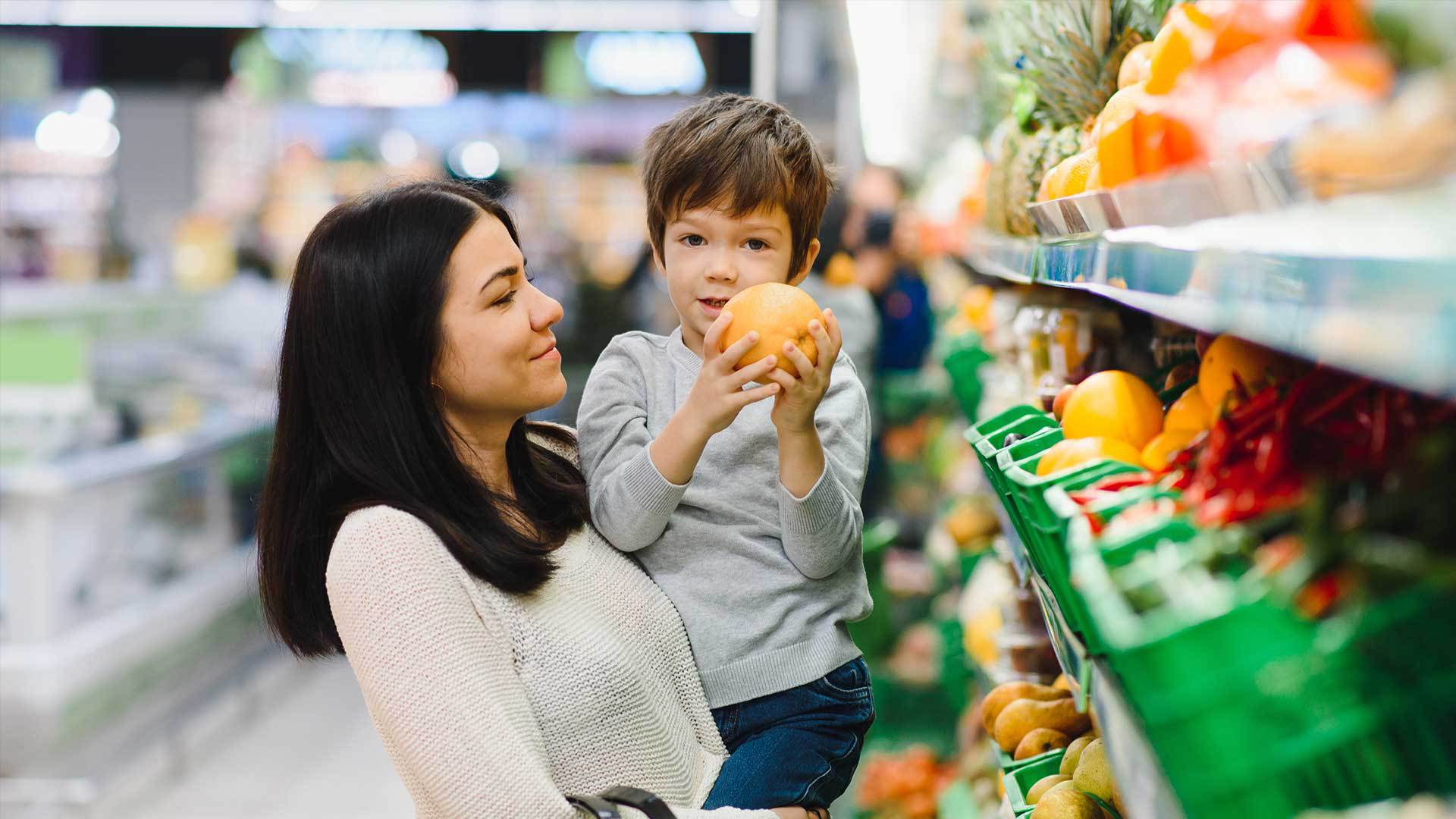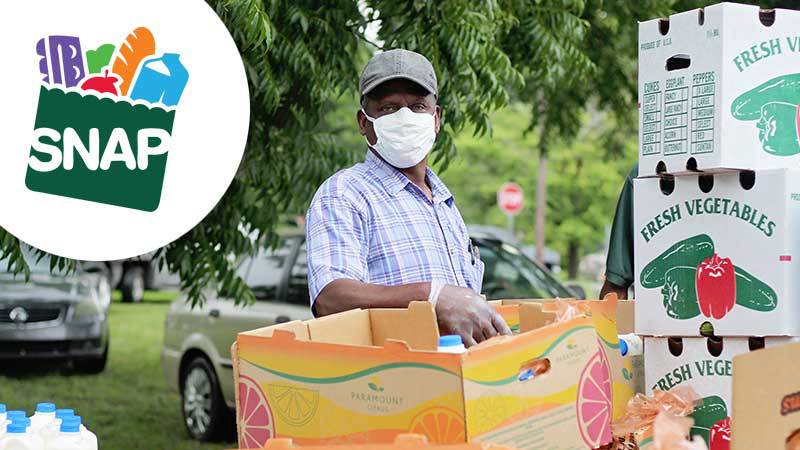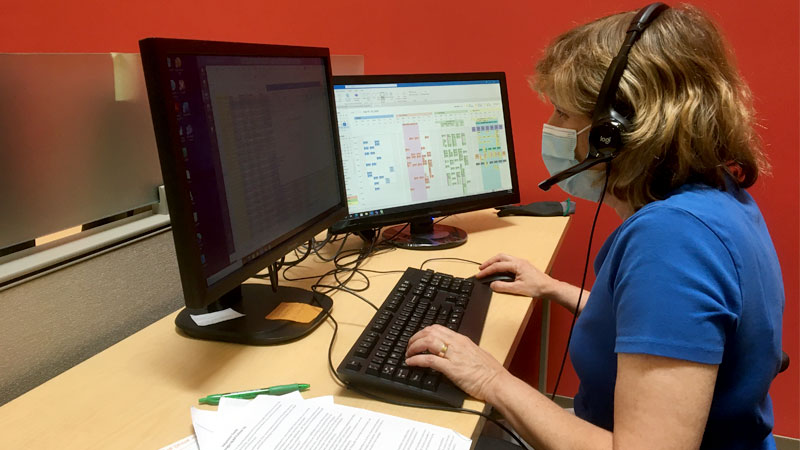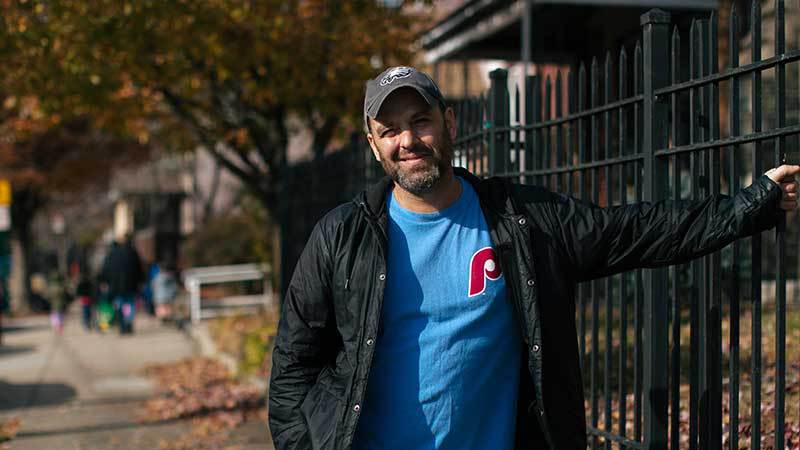Why SNAP is Critical During Times of Crisis

The Supplemental Nutrition Assistance Program (SNAP), a federally funded effort formerly known as “Food Stamps,” has been helping feed struggling Americans since Congress passed the Food Stamp Act of 1964 during the Johnson administration.
When COVID-19 first struck back in March, SNAP was there, expanding to meet the increased number of individuals and families experiencing food insecurity – some for the first time in their lives – and helping ensure they could access the most basic of needs: food.
“We like to say that SNAP is our first line of defense in food assistance; it’s an essential part of the safety net for people who are food insecure.”
MFB’s SNAP Outreach
At the Maryland Food Bank, we have built an incredibly strong food assistance network. Even so, it still has limitations, and SNAP is an important complementary program for food-insecure Marylanders.

Feeding America estimates that for every meal we’re able to provide to a hungry Marylander, SNAP provides nine. The program covers individuals and families whose net income places them at or below the federal poverty line – $12,760 for individuals, and $26,200 for a family of four as of January 1, 2020. The average monthly benefit in Maryland is $128 for individuals, and $361 for households with children. That averages out to $1.29 in SNAP benefits per meal.
Chris, who heads up a three-person, dedicated SNAP Outreach Team, describes the program as an important part of our multi-faceted approach to helping hungry neighbors break down barriers to food insecurity.
“While referring people to pantries where they can get food on a specific day at a designated time has a positive impact, SNAP is a more efficient solution because individuals who qualify are able to use these benefits on their own timeline to purchase the foods they know their households will eat,” Speedie explained. “These benefits are given out consistently, on a month to month basis, so recipients are able to budget their limited resources appropriately,” Chris continued.
SNAP & COVID-19
As the pandemic forces more and more Marylanders to seek food assistance, SNAP has become even more important to our state’s ability to recover from the far-reaching and long-lasting effects of COVID-19.
“Like every other food bank across the country, we’re seeing unprecedented levels of need for food,” Executive Vice President of Programs and External Affairs Meg Kimmel said. “And while the outpouring of financial support has been unmatched, this surge in demand has our staff and network partners working at absolute capacity. Without SNAP, there simply would not be enough resources to provide to hungry Marylanders.”

Due to the increased need for food assistance, MFB’s SNAP Outreach Team has been augmented by 10 volunteers. The volunteers manage the intake of calls and schedule appointments with Speedie’s team, which includes Lucas Bradley and bi-lingual specialist Maite Almaguer Riveron, to help Marylanders apply for SNAP benefits.
In June 2020, MFB’s SNAP Outreach team processed 110% more applications compared to the same time last year, and received 952 SNAP referrals, a 194% increase over June 2019. One reason the program has been able to expand so quickly is due to Emergency SNAP Allotments, which have been in place since April 1st and allow for SNAP recipients to receive the maximum amount of SNAP money per person each month. Without it, the food bank would have to provide hundreds of thousands of pounds of additional food to meet the demand.
Isn’t SNAP a Costly Program?
It’s hard to argue that a program that generates $1.70 in local economic activity for each $1 spent is “costly*.”
SNAP makes up a small portion of the federal budget (less than 1 percent of total federal spending in 2020) but it’s the largest food security program in the country. SNAP is flexible, expanding in times of heightened need and shrinking in better economic times.
According to the Peter G. Peterson Foundation:
Federal spending on the program grew at an average of 28 percent per month in April and May; that is nearly double the largest monthly growth seen during the Great Recession. Such a large increase in spending is unprecedented; the only times where spending on the program has grown nearly as fast were around February 2019, when benefits for that month were advanced to prepare for a government shutdown.
Yet, the program has been under constant threat for the last several years, with multiple efforts to reduce benefits, restrict access, and/or impose unnecessary requirements on recipients.

Just this year, the USDA issued a rule that would limit eligibility for SNAP work requirement waivers based on the economic conditions of jurisdictions across the United States. Although this rule has been temporarily suspended during the COVID-19 crisis, the Maryland Food Bank has been a vocal opponent of this measure and many others that limit the ability for SNAP recipients to access the food they so critically need.
This rule, along with two others – one eliminating Broad-Based Categorical Eligibility (which could lead states to raise the eligibility thresholds for SNAP), and the other eliminating the Standard Utility Allowance (which let states adjust benefits based on true local utility costs) would likely place nearly 80,000 Marylanders above the eligibility requirements for SNAP, and block their access to almost 30 million meals that SNAP benefits would provide.
Why SNAP Means so Much to Hungry Marylanders
It’s a simple equation – when people do not have to exhaust their limited funds on food, things like prescription medications, utility bills, and childcare become much more manageable.
And the dignity that comes with the ability to shop for your own groceries using the SNAP benefits card is an unmeasurable benefit. But COVID-19 has raised additional barriers for some Marylanders to even be able to shop in a store.
SNAP specialist Riveron recalls one SNAP inquiry from a 20-year-old woman living in a one-bedroom apartment with her husband and five children. The husband contracted COVID-19, making their situation even more dire.
“She couldn’t even go outside to get food. They had no income, and no way to provide for themselves. We were able to work around the unique challenges her family situation presented and were not only able to help submit their application for SNAP benefits, but help immediately by arranging to have food delivered to their door,” Riveron said.
While there are many opinions on how the SNAP program should be funded and administered, one thing is clear – we know SNAP works in Maryland. We are on the ground every day, helping to feed our neighbors in need. We see and hear from our partners about how impactful SNAP is – not only to the individuals and families they serve, but to their communities as a whole.
Help Us Make Sure SNAP can Continue to Feed Hungry Marylanders
Make your voice heard by telling our Senators that you support SNAP.
Please copy the sample letter, then paste it into the contact form for one of the two Maryland Senators:
Sample Letter:
On behalf of the Maryland Food Bank, I am writing you to ensure the next Senate COVID-19 stimulus bill prioritizes people facing hunger, including the hundreds of thousands of children who are food insecure in Maryland. The Maryland Food Bank is part of the Feeding America network of 200 food banks and 60,000 partner feeding agencies that continue to experience an increase in demand for local emergency hunger relief.
The Maryland Food Bank has seen an enormous increase in need over the last few months, and they can’t manage it alone. In order to meet the demand, Congress will need to make additional investments in federal nutrition programs including the Supplemental Nutrition Assistance Program (SNAP) to support the work the Maryland Food Bank and other organizations are doing.
SNAP is the nation’s largest domestic program to address hunger and provides healthy nutritious meals for millions of individuals, including the 44% of all SNAP participants who are children under the age of 18. An increase of SNAP benefits by 15% would provide around $25 more per month for an individual and just under $100 per month for a family of four.
Increasing the SNAP minimum benefit from $16 to $30 would help individuals economically impacted by the pandemic. In addition to the SNAP request of an increase of 15%, the extension of Pandemic-EBT is also a top priority to ensure children continue to have access to meals when schools are closed during this time. I would like to request a legislative fix for the extension and improvement of P-EBT, to further support families in every state.
I greatly appreciate all the support you have provided to the Maryland Food Bank, and hope you consider this request to ensure individuals and families facing hunger in Maryland can put food on the table during this unprecedented time.
Sincerely,
NAME






